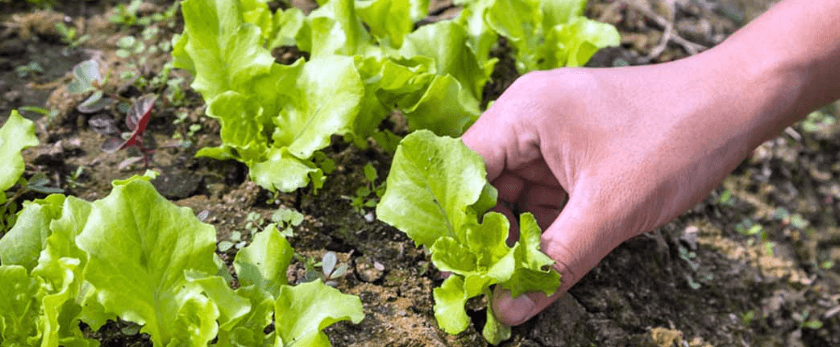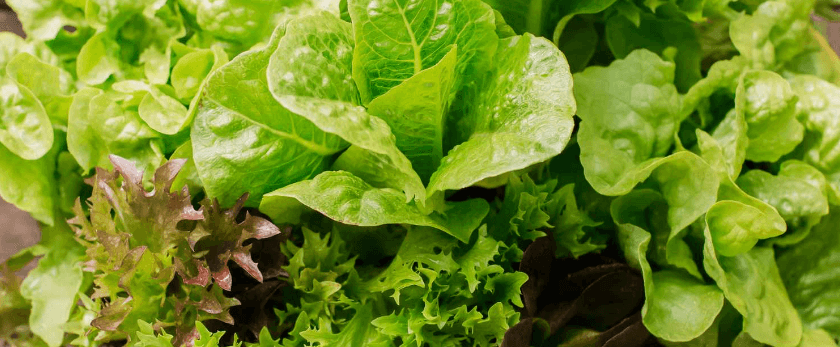Lettuce is a versatile and nutritious vegetable that can be grown in your own backyard. Not only is it easy to grow, but it also has a low carbon footprint and can be grown sustainably. In this article, we will discuss the steps to growing lettuce, the best time to grow it, and common problems that may arise. By following these tips, you can enjoy fresh, homegrown lettuce while reducing your impact on the environment.

How to Care for Lettuce
Watering
Lettuce needs consistent moisture to thrive, but it is important not to overwater it. The best way to water lettuce is to give it a deep watering once or twice a week, depending on the weather. This will encourage the roots to grow deeper, making the plant more resilient to drought. Avoid getting the leaves wet when watering, as this can lead to disease and rot. A drip irrigation system or a soaker hose can be a great way to water lettuce without getting the leaves wet.
Light
Lettuce prefers cool temperatures and partial shade. It can tolerate full sun, but it may bolt (go to seed) quickly in hot weather. If you live in a warmer climate, consider planting lettuce in a spot that receives morning sun and afternoon shade. If you are growing lettuce indoors, place it near a window that receives indirect sunlight.
Soil
Lettuce grows best in well-draining, fertile soil. Before planting, amend your soil with compost or well-rotted manure to provide the necessary nutrients. Avoid using chemical fertilizers, as they can harm beneficial soil organisms and contribute to water pollution. If you are growing lettuce in containers, use a high-quality potting mix that is specifically formulated for vegetables.
Fertilizer
Lettuce is a light feeder and does not require much fertilizer. If your soil is lacking in nutrients, you can use an organic, slow-release fertilizer at the time of planting. Alternatively, you can use a liquid fertilizer every few weeks, but be sure to follow the instructions on the label and avoid over-fertilizing.
Pruning
Lettuce does not require much pruning, but it is important to remove any damaged or diseased leaves to prevent the spread of disease. You can also harvest outer leaves as needed, which will encourage the plant to produce more leaves. Avoid pruning the entire plant at once, as this can cause it to bolt.
What is the Best Time to Grow Lettuce?
Lettuce is a cool-season crop and grows best in temperatures between 45-75°F. It can be grown in both spring and fall, but it is important to avoid extreme temperatures. In the spring, plant lettuce as soon as the soil can be worked, and in the fall, plant it 6-8 weeks before the first frost. If you live in a warmer climate, you can also grow lettuce in the winter by providing it with protection from frost.
Common Problems with Lettuce
Pests
Lettuce is susceptible to a few common pests, including aphids, slugs, and snails. To prevent these pests, keep your garden clean and free of debris, and use row covers to protect your plants. If you do notice pests, try using natural methods such as handpicking or using insecticidal soap.
Diseases
Lettuce can also be affected by various diseases, such as powdery mildew and downy mildew. To prevent these diseases, avoid overhead watering and provide good air circulation around your plants. If you do notice signs of disease, remove and dispose of affected plants to prevent the spread.
Bolting
Bolting is when a plant prematurely produces flowers and seeds. This can happen to lettuce when it is exposed to high temperatures or when it is stressed. To prevent bolting, choose heat-resistant varieties and provide shade during hot weather. If your lettuce does bolt, you can still eat the leaves, but they may be bitter.
Conclusion
Growing lettuce is a simple and rewarding way to reduce your carbon footprint and enjoy fresh, homegrown produce. By following these tips, you can care for your lettuce plants and prevent common problems. Remember to water consistently, provide partial shade, use fertile soil, avoid chemical fertilizers, and prune as needed. With a little bit of effort, you can enjoy delicious, sustainable lettuce all year round. Happy gardening!










